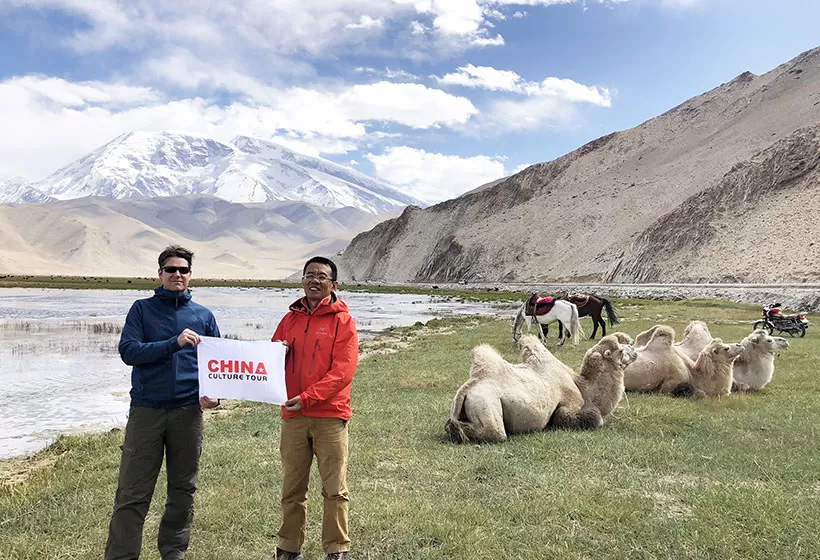
Xinjiang, China’s sprawling and diverse region, is often overlooked by travelers despite its rich history and awe-inspiring landscapes. While the region is known for iconic destinations like Kashgar and the Taklamakan Desert, there are countless hidden gems that remain largely unexplored. From secluded valleys to ancient caravanserais, Xinjiang 新疆旅遊跟團 is a treasure trove for those willing to venture off the beaten path. For adventurous souls eager to explore the less-traveled corners of this vast region, these secrets offer an unforgettable glimpse into a side of China that few get to see. This guide will highlight some of Xinjiang’s best-kept secrets and offer insight into off-the-beaten-path adventures that promise a deeper connection to the region’s diverse cultures and landscapes.
- The Mysterious Kanas Lake
While Kanas Lake is becoming more popular among travelers, it remains one of Xinjiang’s most beautiful and tranquil retreats, largely due to its remote location. Nestled deep within the Altai Mountains, this pristine, turquoise lake is surrounded by dense forests, snow-capped peaks, and isolated villages. Its ever-changing colors, from emerald green to deep blue, make it a photographer’s paradise. The area is home to the Tuvan people, an indigenous group with rich traditions closely tied to nature. Visitors can explore the nearby Hemu Village, one of the last traditional wooden settlements in China, where you can learn about the nomadic lifestyle and experience local hospitality. Hiking, boating, and camping in this area are some of the best ways to experience Xinjiang’s natural beauty away from the crowds.
- The Remote Tianshan Mountains
Though the Tianshan Mountains are a well-known range, many of their most stunning and hidden areas remain largely unexplored. One such spot is the Aksu Grand Canyon, an awe-inspiring geological formation that rivals the Grand Canyon itself, though on a much smaller scale. The canyon’s deep red and orange cliffs are an extraordinary sight, and its isolation makes it one of the region’s least-visited destinations. Another lesser-known area is the Aral Sea Basin, where high-altitude grasslands stretch out to meet rugged mountains, offering a unique glimpse into Xinjiang’s remote landscapes. The Karakol Valley, nestled within the Tianshan range, is another hidden gem, offering opportunities for trekking, horseback riding, and interacting with the nomadic Kazakh herders who live there.
- The Grape Valley of Turpan
Though the Grape Valley in Turpan is known for its vineyards, few visitors venture beyond the main attractions in the area. Just a short drive from Turpan, you can find the Grape Canyon, a secluded spot where grapes hang in abundance over narrow walkways and shaded paths. This peaceful spot, surrounded by the Flaming Mountains, offers a serene escape from the bustling bazaars of Turpan. The area is also home to ancient Uyghur villages, where travelers can learn about the traditional methods of grape cultivation and enjoy homemade wine and fruit. While many head to Turpan’s Karez System and Jiaohe Ruins, exploring the quieter corners of the region provides a much deeper appreciation for the cultural heritage that thrives in these oases.
- Karakul Lake and the Wakhan Corridor
Located on the edge of the Karakol Valley, Karakul Lake is a stunning high-altitude lake that sits at the foot of the Pamir Mountains, close to the Wakhan Corridor, a narrow strip of land that stretches into Afghanistan. This remote and rugged area offers one of the most isolated and striking landscapes in all of Xinjiang. At 3, 600 meters above sea level, the lake’s surface reflects the snow-covered peaks, creating an ethereal scene. The lake is home to Kyrgyz nomads, whose yurts dot the landscape, providing a glimpse into their traditional lifestyle. Travelers can trek along the shores, visit the nomadic camps, and even camp under the stars in one of the most tranquil settings imaginable. Due to its proximity to the border, the area is less visited by tourists but offers an unparalleled experience for those seeking adventure and solitude.
- The Ruins of Ancient Cities
Xinjiang is home to some of China’s most fascinating ancient ruins, many of which remain far off the tourist radar. The Loulan Ruins, located in the heart of the Taklamakan Desert, offer a glimpse into a once-thriving civilization that vanished centuries ago. The ruins, believed to be remnants of a kingdom that flourished along the Silk Road, lie under the harsh desert sun, making them both mysterious and haunting. Another fascinating destination is Karakhanid Tombs, located near Kashgar, which are often overshadowed by the more famous Id Kah Mosque and Kashgar Old Town. These tombs, built with intricate stonework, serve as a testament to the region’s rich Islamic heritage and offer a quieter alternative to the bustling markets and mosques.
Conclusion: Xinjiang’s Untold Wonders Await
For those willing to seek out Xinjiang’s best-kept secrets, the rewards are immense. From the secluded waters of Kanas Lake to the remote valleys of the Tianshan Mountains, Xinjiang offers a wealth of untapped beauty and cultural treasures. Each of these off-the-beaten-path destinations allows travelers to immerse themselves in the region’s diverse landscapes and vibrant cultures, while escaping the crowds that flock to more well-known attractions. Whether you are exploring ancient ruins, hiking through remote mountain ranges, or discovering traditional nomadic lifestyles, Xinjiang promises an adventure like no other. For the intrepid traveler, Xinjiang’s hidden wonders are waiting to be uncovered.
